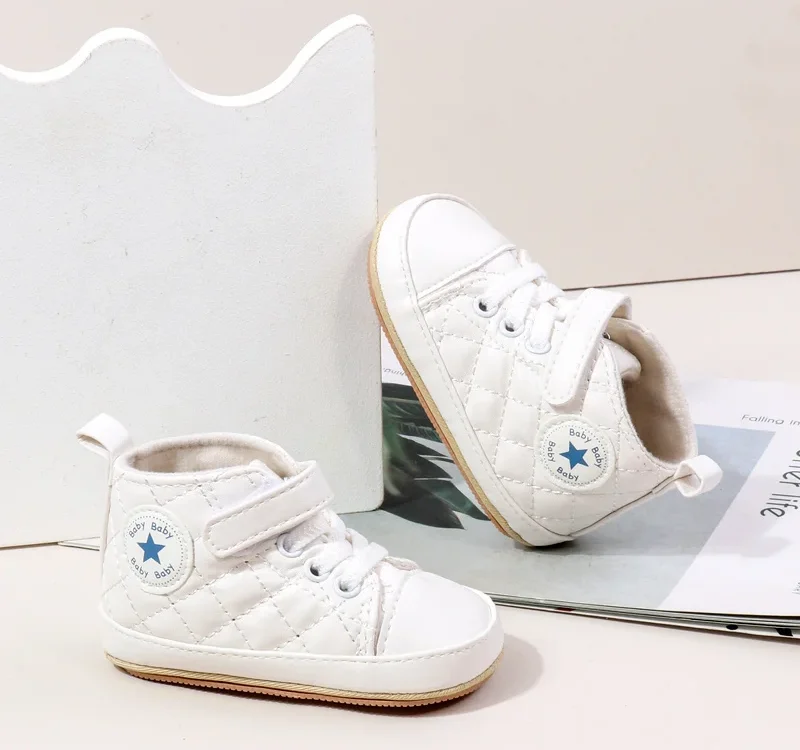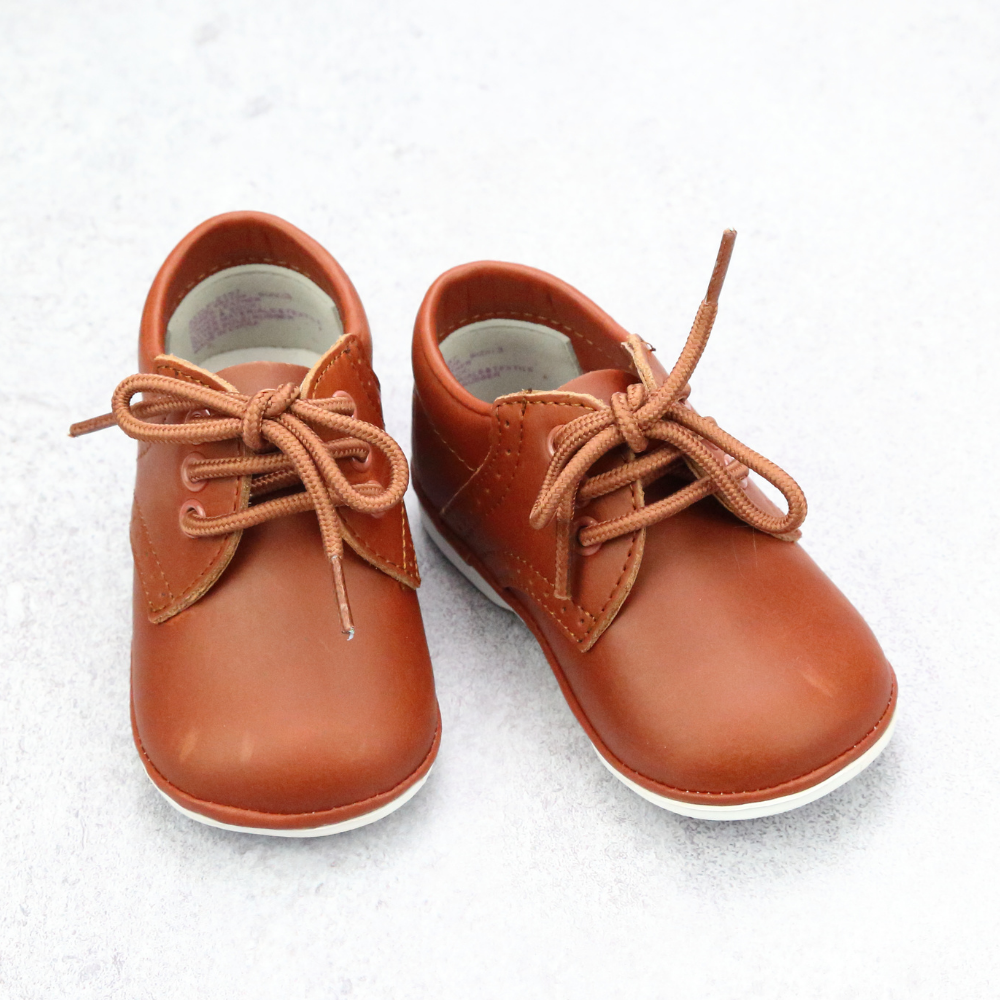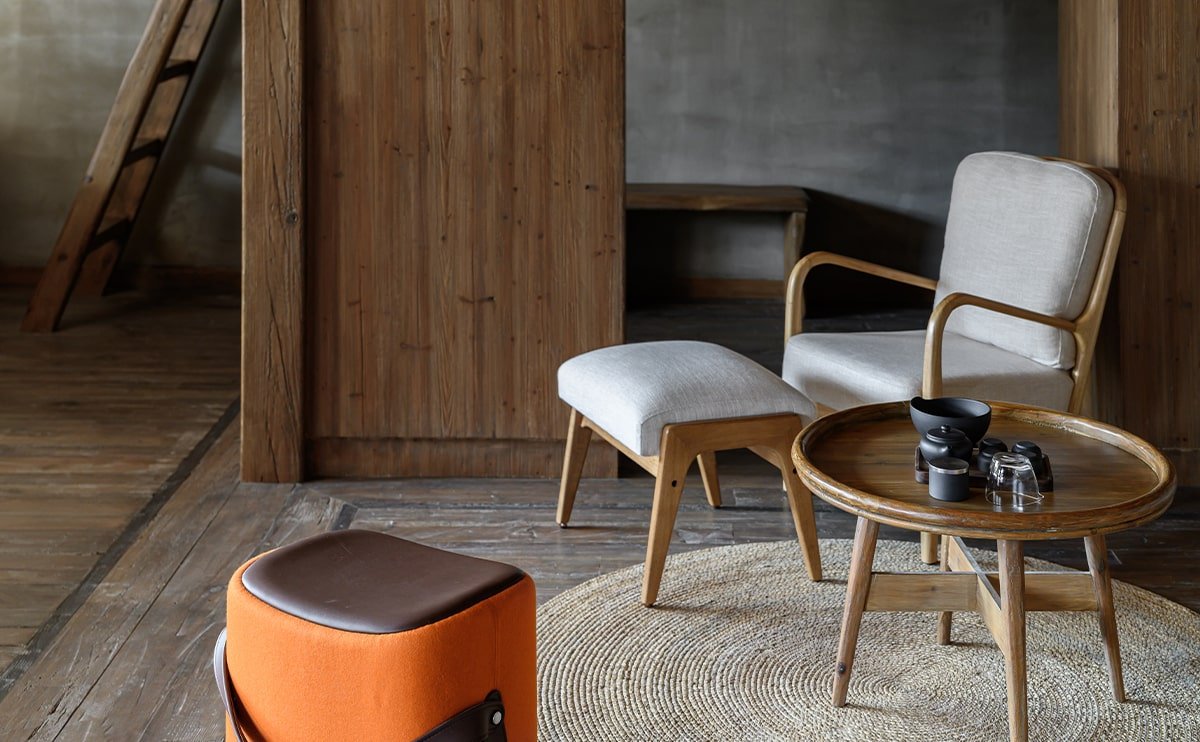Baby Shoes Boy: Top Adorable Styles for Little Feet

Finding the perfect baby shoes for boys is important. Little feet need comfort and style.
In this blog post, we explore baby shoes for boys. Whether for first steps or fashion, the right pair matters. Babies grow quickly, and their feet need proper support. Shoes should be soft, flexible, and safe. Parents often worry about choosing the right shoes.
With so many options, it can be confusing. We aim to make this choice easier for you. Discover what to look for in baby shoes. Learn about materials, sizes, and styles. We will guide you through the best choices available. Let’s start this journey to find the best baby shoes for your little boy.
Choosing The Right Size
Choosing the right size for baby boy shoes can feel overwhelming. Little feet grow fast, and picking the perfect fit is crucial for comfort and support. Ill-fitting shoes can cause discomfort and even affect walking. This guide will help you make the best choice for your baby boy, ensuring he takes his first steps with ease and confidence.
Measuring Foot Length
Before buying shoes for your baby boy, measure his foot length. Accurate measurement ensures a snug fit. Here is a simple method to measure your baby’s foot:
- Place a piece of paper on a flat surface.
- Put your baby’s foot on the paper with the heel against a wall.
- Mark the longest toe and the heel.
- Measure the distance between these marks.
Using this method ensures the right size. Remember to measure both feet. Sometimes one foot is slightly larger. In such cases, choose shoes that fit the larger foot. Below is a simple size chart to help:
| Foot Length (inches) | Shoe Size (US) |
|---|---|
| 3.5 – 4 | 1 |
| 4 – 4.5 | 2 |
| 4.5 – 5 | 3 |
Choose shoes with a little extra room. About half an inch of space allows for growth and comfortable movement.
Consider Growth Spurts
Baby boys grow quickly, and their feet are no exception. Growth spurts can surprise you. It’s essential to check their shoe size regularly. Here are some tips to keep in mind:
- Check every 6 to 8 weeks for growth.
- Look for signs of tightness, like red marks or blisters.
- Ensure the shoe material is flexible to accommodate growth.
During growth spurts, your baby might need new shoes more often. A flexible shoe material can help reduce discomfort. Shoes with adjustable straps or laces can also accommodate slight growth. Understanding your baby’s growth patterns can save you time and ensure comfort. Always prioritize comfort over style.
By considering these factors, you can ensure your baby boy’s feet remain healthy and happy. Properly fitting shoes support natural growth and movement, making playtime enjoyable and safe.

Material Matters
Choosing the right material for baby shoes is crucial. As parents, you want your baby’s first steps to be comfortable and safe. The materials used in baby boy footwear can make a big difference in durability, comfort, and style. Understanding the pros and cons of each can help you find the perfect pair for your little one.
Leather Vs. Fabric
Leather and fabric are two popular choices for infant shoes. Leather baby shoes offer several benefits. They are durable and provide a sturdy support for those tiny feet. Leather is also naturally breathable, allowing air circulation that keeps feet dry. Leather shoes often come in stylish designs, making them a favorite for many parents.
Fabric shoes, on the other hand, have their own advantages. They are often lighter than leather, making them comfortable baby footwear. Fabric options tend to be more flexible, allowing for easy movement. They are also typically easier to clean, a key factor for active toddlers.
Here’s a comparison to help you decide:
| Material | Benefits | Considerations |
|---|---|---|
| Leather |
|
Higher cost, may require maintenance |
| Fabric |
|
Less support, wears out quicker |
Breathability And Comfort
Breathability is vital in baby boy footwear. Baby shoe sizes vary, but the need for breathable material remains constant. Breathable baby shoes ensure your little one’s feet stay dry and comfortable. This helps prevent irritation and discomfort during all those wobbly steps.
Comfort is equally important. Soft sole shoes are excellent for indoor wear. They provide the flexibility needed for crawling and learning to walk. For outdoor activities, durable toddler footwear offers the support and protection needed.
Consider these factors for maximum comfort:
- Choose shoes with breathable materials like leather or mesh.
- Look for cushioned soles that provide support.
- Ensure the shoes fit well to avoid blisters.
A comfortable baby footwear choice makes all the difference in your child’s mobility and happiness. Selecting the right material and fit is key to nurturing your child’s first adventures.
Style Options
Baby shoes for boys offer a delightful range of style options. Whether dressing for a casual day at the park or a formal family gathering, finding the right pair can enhance your little one’s outfit and comfort. From playful sneakers to elegant loafers, the choices are vast and varied.
Casual Everyday Styles
For daily adventures, casual styles are perfect. These shoes offer comfort and durability, making them ideal for all-day wear. Some popular choices include:
- Sneakers: Easy to slip on and off, providing both support and style.
- Canvas Shoes: Lightweight and breathable, great for warm weather.
- Sandals: Perfect for beach outings and sunny days.
A table might help compare features:
| Style | Features |
|---|---|
| Sneakers | Supportive, trendy designs, various colors |
| Canvas Shoes | Lightweight, breathable, easy to clean |
| Sandals | Open design, adjustable straps, perfect for summer |
Choosing the right casual shoe means considering comfort, ease of use, and style. These options ensure that your little boy’s feet are well-protected and fashionable.
Formal Occasion Choices
For special events, formal shoes add a touch of elegance. These styles are designed to match dressier outfits and are made with quality materials. Key options include:
- Loafers: Sleek and stylish, suitable for weddings or family gatherings.
- Dress Shoes: Classic and sophisticated, often in neutral colors.
- Boots: Perfect for cooler weather, providing warmth and style.
Consider these factors in a table:
| Style | Features |
|---|---|
| Loafers | Comfortable fit, elegant look, easy to wear |
| Dress Shoes | Timeless design, polished finish, versatile |
| Boots | Warm, durable, versatile for colder months |
Formal shoes not only complement the outfit but also ensure your boy feels special on the occasion. These choices reflect both style and functionality, offering the best of both worlds.
Durability And Support
Choosing the right baby shoes for boys is crucial. Durability and support are key factors to consider. Little feet are delicate, and they need shoes that offer comfort and stability. Durable baby shoes can withstand the rigors of active play, ensuring they last longer. Supportive baby shoes help in the healthy development of your child’s feet. This guide explores what makes baby shoes durable and supportive. It will help you choose the best infant footwear for your child.
Sturdy Soles
Sturdy soles are essential for durable baby shoes. They provide the necessary grip and stability for little explorers. Boys’ shoes with robust soles can handle different surfaces. This means they are suitable for both indoor and outdoor activities.
When selecting baby footwear, consider shoes with cushioned soles. These offer a soft landing for little feet. Lightweight baby shoes with sturdy soles ensure comfort and protection. Here are some features to look for in sturdy soles:
- Non-slip patterns: These increase traction, preventing slips and falls.
- Flexible design: Allows natural foot movement, aiding in first walking shoes.
- Shock absorption: Reduces impact, ideal for toddler shoes on hard surfaces.
Below is a table summarizing key attributes of sturdy soles:
| Feature | Benefit |
|---|---|
| Non-slip patterns | Prevents slipping |
| Flexible design | Supports natural movement |
| Shock absorption | Reduces impact |
Ankle Support Features
Ankle support is vital for growing feet. Supportive baby shoes with good ankle support prevent injuries. They also promote proper foot alignment. Look for infant footwear with features that enhance ankle support.
Breathable materials are important. They keep feet cool and dry, reducing discomfort. Shoes with ankle support features should be easy to wear. This ensures convenience for both parents and children. Consider these features for ankle support:
- High-top designs: Provide better ankle stability.
- Adjustable straps: Ensure a snug fit, enhancing support.
- Padded collars: Offer extra comfort around the ankle.
Supportive baby shoes with ankle support features help in the healthy development of your child’s feet. They aid in balance and coordination, making them ideal for active toddlers. Choose boys’ shoes that combine these features for maximum benefit.
Popular Brands
Choosing the right shoes for your baby boy can be a delightful experience. Popular brands offer a variety of styles and designs, ensuring comfort and durability. Quality is essential, especially for growing feet. With numerous brands available, finding the perfect pair may seem daunting. Many brands are known for their craftsmanship, providing shoes that are both stylish and functional. Explore the top choices and budget-friendly options that cater to different needs and preferences.
Top Choices For Boys
Several brands stand out for their exceptional quality and style in baby boy shoes. These brands focus on comfort, ensuring that your baby boy’s feet are well-supported:
- Nike: Known for its sporty designs, Nike offers shoes that are both stylish and supportive.
- Adidas: A favorite for many parents, Adidas provides shoes with excellent grip and comfort.
- Stride Rite: Famous for their focus on foot health, Stride Rite offers shoes designed for growing feet.
Here’s a quick comparison of popular features:
| Brand | Style | Comfort | Price Range |
|---|---|---|---|
| Nike | Sporty | High | $$$ |
| Adidas | Casual | Medium | $$ |
| Stride Rite | Classic | High | $$$ |
Each brand offers something unique, catering to various tastes and needs. Whether you prefer sporty, casual, or classic designs, these brands have you covered.
Budget-friendly Options
Finding affordable yet quality shoes for your baby boy is possible. Many brands offer budget-friendly options without compromising on comfort or style:
- Carter’s: Known for their affordable pricing, Carter’s offers shoes that are both cute and comfy.
- Target: A great place for budget shopping, Target has a variety of stylish and affordable baby shoes.
- Old Navy: Offers trendy designs at a fraction of the cost, perfect for fashion-conscious parents.
Here’s a breakdown of what these brands offer:
| Brand | Style | Comfort | Price Range |
|---|---|---|---|
| Carter’s | Casual | Medium | $ |
| Target | Varied | Medium | $ |
| Old Navy | Trendy | Medium | $ |
These brands prove that you don’t have to spend a fortune to find quality shoes. With a range of styles and prices, parents can find the perfect pair without breaking the bank.

Seasonal Considerations
Choosing the right Baby Shoes For Boys involves more than just style. It’s important to consider the season when selecting Baby Boy Footwear. Seasonal considerations ensure your little one’s feet stay comfortable and protected. Whether it’s the sweltering heat of summer or the chilly winds of winter, the right shoes can make all the difference. Here, we explore the best options for each season.
Summer Footwear
Summer calls for breathable and lightweight Baby Boy Footwear. Hot weather requires shoes that keep little feet cool and comfy. Some popular options include:
- Summer Sandals: Open-toed sandals are perfect for hot days. They offer ventilation and ease of movement.
- Infant Sneakers: These are great for active toddlers. Look for mesh designs that allow airflow.
When selecting Summer Sandals or sneakers, prioritize materials like cotton or mesh. These materials help in keeping the feet dry by allowing them to breathe. Below is a quick comparison table:
| Shoe Type | Material | Benefits |
|---|---|---|
| Summer Sandals | Leather, Canvas | Breathable, Easy to Wear |
| Infant Sneakers | Mesh, Cotton | Flexible, Lightweight |
Selecting the right size is crucial. Always check the Baby Shoe Sizes to ensure the perfect fit. A well-fitted shoe prevents blisters and discomfort.
Winter Boots And Warmth
During colder months, Winter Booties are essential for keeping those tiny toes warm. Durable Baby Shoes designed for winter provide insulation and protection against the cold. Here are some features to look for:
- Fleece Lining: Keeps the feet warm and cozy.
- Waterproof Material: Protects against snow and rain.
- Adjustable Straps: Ensure a snug fit.
The right winter boots should combine warmth with comfort. Toddler Shoes with non-slip soles are ideal, offering stability on slippery surfaces. Here’s a quick guide to help you choose:
| Feature | Importance |
|---|---|
| Fleece Lining | Essential for Warmth |
| Waterproof | Crucial for Wet Conditions |
| Non-Slip Soles | Important for Safety |
Remember, Comfortable Baby Shoes make happy feet. Proper Baby Footwear Styles ensure your baby boy is ready to explore, regardless of the season.
Care And Maintenance
Baby shoes for boys are not only adorable but also essential for those first steps. Proper care and maintenance ensure these tiny shoes last longer and stay comfortable. Keeping them clean and well-stored maintains their quality and appearance. This section provides practical tips to keep your little one’s shoes in top shape.
Cleaning Tips
Keeping baby boy shoes clean is vital for hygiene and durability. Regular cleaning prevents dirt build-up and keeps them looking fresh. Follow these simple tips for effective cleaning:
- Check the Label: Always start by checking the care label for specific instructions.
- Gentle Washing: Use a mild soap and warm water. Avoid harsh chemicals that can damage the fabric.
- Spot Clean: For minor stains, a damp cloth can work wonders. Dab gently without rubbing.
- Machine Wash: Only if the label allows. Use a delicate cycle and place shoes in a laundry bag.
- Dry Naturally: Avoid direct sunlight or heat sources. Let them air dry to maintain shape.
Avoid soaking leather or suede shoes. A soft brush can help remove dirt without damaging the material.
Storage Recommendations
Proper storage extends the life of baby shoes. It helps maintain their shape and keeps them ready for use. Consider these tips for storing baby boy shoes:
- Clean Before Storing: Always clean shoes before putting them away. This prevents stains and odors.
- Use Shoe Trees: For leather or formal shoes, use shoe trees to maintain their shape.
- Climate Control: Store in a cool, dry place. Avoid damp areas that promote mold growth.
- Organize by Size: Keep shoes organized by size. This makes it easy to find the right pair when needed.
- Use Boxes or Racks: Shoe boxes or racks protect shoes from dust and damage.
For a quick overview, here’s a simple table:
| Material | Storage Tip |
|---|---|
| Leather | Use shoe trees, avoid direct sunlight |
| Fabric | Store in a dry area, use racks |
| Rubber | Avoid tight spaces, allow ventilation |
These steps ensure baby boy shoes remain in great condition, ready for every adventure.

When To Replace Shoes
Choosing the right baby shoes for boys can be a delightful experience. Their tiny feet deserve comfort, support, and style. Yet, as your little one grows, understanding when to replace shoes becomes crucial. Shoes that fit well ensure healthy foot development. Whether it’s due to wear or growth, timely replacement is key to keeping your child comfortable. Knowing the signs can help you make the right decision.
Signs Of Wear
Boys’ shoes go through a lot, from crawling to first steps. Identifying signs of wear helps maintain foot health. Durable baby shoes may withstand rough use, but they eventually show wear. Look for these indicators:
- Sole Damage: Cracks or holes in the sole can affect grip.
- Frayed Laces: Damaged laces can make shoes hard to secure.
- Worn Out Heels: Uneven heel wear may lead to discomfort.
A table can help you track wear patterns:
| Signs of Wear | Impact on Feet |
|---|---|
| Sole Damage | Slippery, less support |
| Frayed Laces | Difficulty securing shoes |
| Worn Out Heels | Uneven pressure on feet |
Regular inspection helps in spotting these issues early. Keeping an eye on signs of wear in shoes ensures your child’s comfortable baby shoes are replaced timely.
Growth Indicators
Kids’ feet grow fast. Recognizing growth indicators helps in choosing the right shoe size for toddlers. Growth spurts happen quickly, demanding new shoes. Here are common signs:
- Tight Fit: Shoes feel snug, leaving marks on the feet.
- Complaints of Discomfort: Your toddler may express discomfort or reluctance to wear shoes.
- Frequent Toe Bumps: Toes reaching the shoe’s edge signal the need for a bigger size.
For infant footwear, regular size checks are essential. Consider a growth chart:
| Age | Recommended Shoe Size |
|---|---|
| 6-12 months | Size 2-3 |
| 12-18 months | Size 3-4 |
| 18-24 months | Size 4-5 |
Tracking these growth indicators ensures your child’s baby footwear fits well. Adjusting sizes during growth spurts is essential for comfort and healthy foot development. Always prioritize your child’s comfort and foot health.
Frequently Asked Questions
When Should I Buy My Baby’s First Shoes?
Buy your baby’s first shoes when they start walking confidently. Ensure the shoes fit well and provide good support. Choose soft, flexible soles to encourage natural foot movement. Consult a professional for the right size and fit. Remember, comfort and protection are key for your baby’s developing feet.
What Shoe Size For A 1 Year Old Boy?
A 1-year-old boy typically wears shoe sizes between 3 and 5 US. Measure the child’s feet for accuracy. Opt for shoes with a bit of room to accommodate growth and comfort. Different brands may have slight variations, so check their sizing charts.
Why Can’t Babies Wear Shoes Before 1 Year?
Babies need to develop foot muscles and balance naturally. Wearing shoes too early can restrict growth and movement. Soft-soled footwear or socks are better for infants as they allow natural foot development. Encourage barefoot walking indoors to help strengthen their feet and improve coordination.
What Age Should Babies Start Wearing Shoes?
Babies should start wearing shoes when they begin walking outdoors, usually around 12 to 18 months. Indoors, barefoot is best for developing balance and strength. Choose lightweight, flexible shoes that fit well and provide good support. Always prioritize comfort and proper fit to support healthy foot development.
Conclusion
Choosing the right shoes for your baby boy is important. Comfort and support help little feet grow strong. Keep an eye on fit and material. Soft, breathable fabrics are best. Always measure your baby’s feet often. Growth happens quickly at this stage.
Shoes with adjustable straps offer flexibility. Consider the weather too. Warm boots for winter, airy sandals for summer. Your baby’s first steps are special. Make them safe and joyful with the right shoes. Remember, the right pair can make a big difference.
Happy walking!

